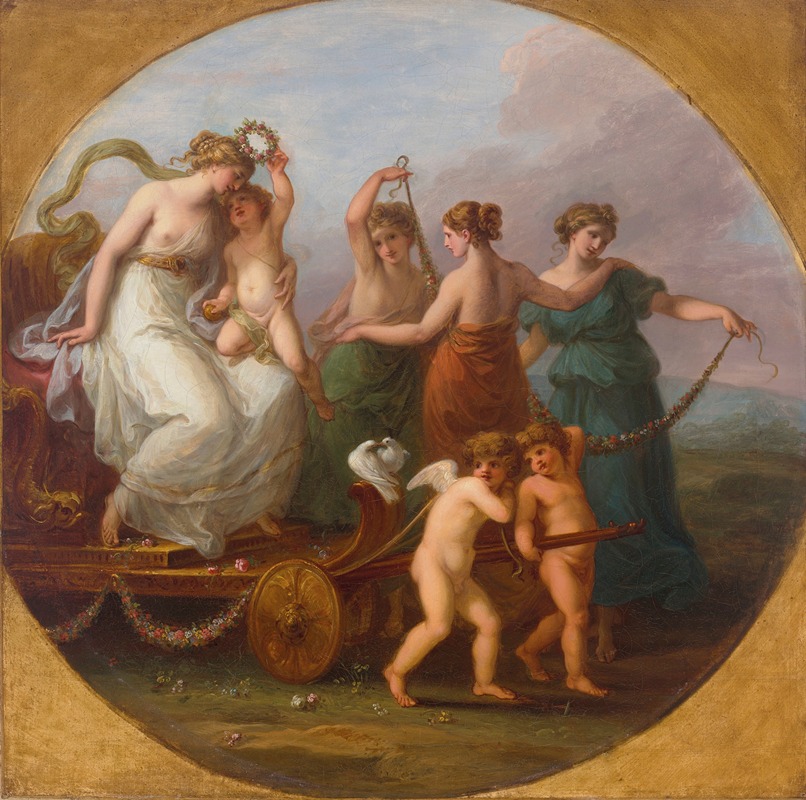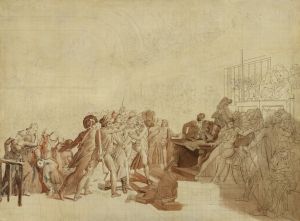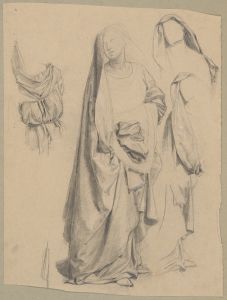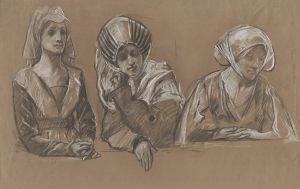
The Triumph of Venus with the Three Graces
A hand-painted replica of Angelica Kauffmann’s masterpiece The Triumph of Venus with the Three Graces, meticulously crafted by professional artists to capture the true essence of the original. Each piece is created with museum-quality canvas and rare mineral pigments, carefully painted by experienced artists with delicate brushstrokes and rich, layered colors to perfectly recreate the texture of the original artwork. Unlike machine-printed reproductions, this hand-painted version brings the painting to life, infused with the artist’s emotions and skill in every stroke. Whether for personal collection or home decoration, it instantly elevates the artistic atmosphere of any space.
Angelica Kauffman, a prominent Swiss-born Neoclassical painter of the 18th century, created The Triumph of Venus with the Three Graces. Known for her refined style and mastery of classical themes, Kauffman was one of the founding members of the Royal Academy of Arts in London, a rare achievement for a woman in her time. Her works often depicted mythological, historical, and allegorical subjects, reflecting the intellectual and artistic currents of the Enlightenment.
The Triumph of Venus with the Three Graces is a painting that exemplifies Kauffman’s ability to blend classical subject matter with the elegance and grace characteristic of her style. The artwork portrays Venus, the Roman goddess of love and beauty, accompanied by the Three Graces, who are traditionally associated with charm, beauty, and creativity. The composition reflects the Neoclassical emphasis on harmony, balance, and idealized forms, drawing inspiration from ancient Greco-Roman art and mythology.
In this painting, Venus is typically depicted as the central figure, radiating beauty and serenity. The Three Graces, often shown as a trio of youthful and graceful women, are positioned around her, engaging in gestures that symbolize their roles as attendants to the goddess. The figures are rendered with soft, flowing lines and delicate color palettes, showcasing Kauffman’s skill in creating a sense of movement and emotional connection among the characters.
Kauffman’s work often incorporated themes of virtue, morality, and the celebration of feminine qualities, aligning with the cultural ideals of her era. Her portrayal of Venus and the Three Graces in this painting emphasizes their symbolic roles in fostering harmony and beauty, rather than focusing solely on sensuality. This approach reflects Kauffman’s broader artistic philosophy, which sought to elevate the intellectual and moral dimensions of her subjects.
The exact date of the painting’s creation is not definitively documented, but it is consistent with Kauffman’s mature period, during which she produced many of her most celebrated works. The painting is believed to have been commissioned by a patron who admired Kauffman’s ability to reinterpret classical themes for contemporary audiences.
Today, The Triumph of Venus with the Three Graces is recognized as an example of Kauffman’s contribution to the Neoclassical movement and her role in shaping the artistic landscape of her time. The painting is held in a private collection or museum, though specific details about its current location are not widely available.


















